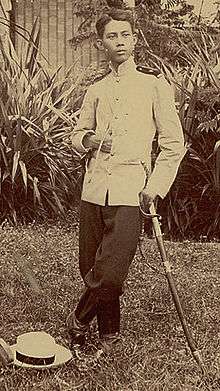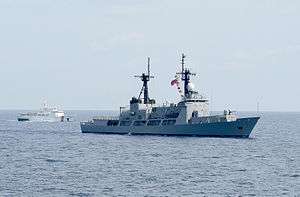Gregorio del Pilar
| Gregorio Hilario Del Pilar y Sempio | |
|---|---|
 Brigadier General Gregorio del Pilar circa 1899 | |
| Birth name | Gregorio del Pilar y Sempio |
| Nickname(s) |
"Goyong" "Boy General" |
| Born |
November 14, 1875 Bulacan, Bulacan, Captaincy General of the Philippines |
| Died |
December 2, 1899 (aged 24) † Tirad Pass, Ilocos Sur, Philippine Islands |
| Allegiance |
* Kakarong Republic |
| Service/branch |
|
| Years of service | 1896–1899 |
| Rank | Brigadier General |
| Commands held |
Commanding Gen. Aguinaldo's |
| Battles/wars |
Philippine Revolution * Battle of Kakarong de Sili * Raid at Paombong * Battle of Pasong Balite Philippine-American War * Battle of Quingua * Battle of Calumpit * Battle of Tirad Pass |
| Relations |
Fernando H. del Pilar (Father) Felipa Sempio (Mother) Marcelo H. del Pilar (Uncle) Toribio H. del Pilar (Uncle) |
Gregorio Hilario del Pilar y Sempio (November 14, 1875 – December 2, 1899) was one of the youngest generals in the Philippine Revolutionary Forces during the Philippine Revolution and the Philippine–American War. He is most known for his successful assault on the Spanish barracks of Cazadores in the municipality of Paombong, his victory on the first phase Battle of Quingua and his last stand at the Battle of Tirad Pass. during the Philippine-American war. Because of his youth, he became known as the "Boy General".[1]
Early life and education
Born on November 14, 1875 to Fernando H. del Pilar and Felipa Sempio of Bulacan, Bulacan, the fifth among six siblings.[2] He was the nephew of propagandist Marcelo H. del Pilar and Toribio H. del Pilar, who was exiled in Guam for his involvement in the 1872 Cavite Mutiny.
"Goyong", as he was casually known, studied at the Ateneo Municipal de Manila, where he received his bachelor's degree in 1896, at the age of 20. When the Philippine Revolution against Spanish rule broke out in August under the leadership of Andres Bonifacio, del Pilar joined the insurgency. He distinguished himself as a field commander while fighting Spanish garrisons in Bulacan.
Military career
On December 28, 1896, he participated in an attack in Kakarong de Sili—Pandi, Bulacan on a town inimical to the Katipunan. On January 1, 1897, he was among the defenders when a Spanish counterattack retook the town, receiving a slight wound when a bullet grazed his forehead.[3] His courage and bravery in that action won him recognition and a promotion to the rank of Lieutenant.[4] In August 1897, then a Captain, he met with Emilio Aguinaldo in his Biak-na-bato headquarters and proposed an attack on a Spanish garrison in Paombong, Bulacan. Aguinaldo approved his plan and the attack was successfully carried out with the capture of 14 Mauser rifles. Shortly thereafter, Aguinaldo raised him to the rank of Lieutenant Colonel.[5] After the Pact of Biak-na-Bato, he went into exile in Hong Kong with Aguinaldo and other revolutionary leaders.[6]
After Americans defeated the Spanish in the Battle of Manila Bay during Spanish–American War, Aguinaldo, del Pilar, and other exiled leaders returned to the Philippines. Aguinaldo named del Pilar Dictator of Bulacan and Nueva Ecija provinces.[7]
On June 24, 1898, he accepted the Spanish surrender of his home town of Bulacan. Shortly thereafter, he was promoted to the rank of Brigadier General.[8]
When the Philippine-American War broke out in February 1899, following the cession of the Philippines by Spain to the United States in the Treaty of Paris of 1898, del Pilar led his troops to a victory over Major Franklin Bell in the first phase of the Battle of Quingua (later renamed Plaridel in honor of his uncle) on April 23, 1899. During the battle, his forces repelled a cavalry charge and killed the highly respected Colonel John M. Stotsenburg,[9] after whom Clark Air Base was originally named (Fort Stotsenburg).[10]
Death
On December 2, 1899, del Pilar led 60 Filipino soldiers of Aguinaldo's rear guard in the Battle of Tirad Pass against the "Texas Regiment", the 33rd Infantry Regiment of the United States led by Peyton C. March. A delaying action to cover Aguinaldo's retreat, the five-hour standoff resulted in Del Pilar's death from a shot to the neck, either at the height or at end of the fighting, depending on eyewitness accounts. Del Pilar's body was later despoiled and robbed by the victorious American soldiers.[11] Del Pilar's body lay unburied for days, exposed to the elements. While retracing the trail, an American officer, Lt. Dennis P. Quinlan, gave the body a traditional U.S. military burial. Upon del Pilar's tombstone, Quinlan inscribed, "An Officer and a Gentleman".[12]
In 1930, del Pilar's body was exhumed and was identified by the gold tooth and braces he had installed while in exile in Hong Kong.
Memorials

- Fort Del Pilar, home of the Philippine Military Academy in Baguio, is named after him.
- In 1944, the Japanese-sponsored Philippine republic of President Jose P. Laurel issued the Tirad Pass Medal commemorating the battle and del Pilar's sacrifice. A bust of General del Pilar occupies the center of the obverse (front) side of the medal. The Tirad Pass Medal was the only award issued to recognize service to the Laurel government during the Japanese occupation.
- In 1955, the municipality of Concepcion in Ilocos Sur was renamed in his honor.
- In 2011, the newest vessel of the Philippine Navy, BRP Gregorio del Pilar, was named after him. The ship is a patrol frigate.
In popular culture
- His life was shown in the Philippine TV news show Case Unclosed as its 13th episode.
- Portrayed by Romnick Sarmenta in the 1997 film, Tirad Pass: The Story of Gen. Gregorio del Pilar (Lead Role).
- Portrayed by Felix Roco in the 2012 film, El Presidente.
- Portrayed by Paulo Avelino in the 2015 film, Heneral Luna.
See also
References
Notes
- ↑ Kalaw 1974
- ↑ Kalaw 1974, p. 3
- ↑ Kalaw 1974, pp. 15–18
- ↑ Kalaw 1974, p. 18
- ↑ Kalaw 1974, pp. 22–25
- ↑ Kalaw 1974, p. 26
- ↑ Kalaw 1974, p. 27
- ↑ Kalaw 1974, p. 30
- ↑ "Facts About The Filipinos". The Philippine Review. 1: 36. 1900.
- ↑ Rosmer, D. (1986). An Annotated Pictorial History of Clark Air Base: 1899-1986. Republic of the Philippines: Office of History, Clark Air Base.
- ↑ "no title provided". Washington Sentinel. 1900-03-24. p. 1.
- ↑ Karnow, Stanley (2010). In Our Image: America's Empire in the Philippines. Random House. ISBN 9780307775436. Retrieved 27 November 2013.
Citations
- Kalaw, Teodoro Manguiat (1974). An Acceptable Holocaust: Life and Death of a Boy-General. National Historical Commission.
Further reading
- Zaide, Gregorio F. (1984). Philippine History and Government. National Bookstore Printing Press.
External links
- General Gregorio Del Pilar - Philippine Military Academy
- General Goyo: The Gregorio del Pilar Story 1 - GMA News Philippines (video) on YouTube
- General Goyo: The Gregorio del Pilar Story 2 - GMA News Philippines (video) on YouTube
- Tirad Pass: The Story of Gen. Gregorio del Pilar at the Internet Movie Database
| Government offices | ||
|---|---|---|
| Preceded by Newly established |
Governor of Bulacan 1898–1899 |
Succeeded by Isidro Torres |